Sindhi cuisine is rich in flavour and taste, but very simple to prepare. A few key ingredients such as danu khatta (dried pomegranate seeds), kokum ja gul (dried kokum), shahjeero (caraway seeds), ambchur powder (dried mango powder), bhee (lotus stem), phoolpatasha ( lotus seeds), khumbyun (fresh mushrooms), dhingri (dried oyster mushrooms) and guchhi ( yellow morels growing in the Himalayas) raise a simple Sindhi meal to gourmet standards.
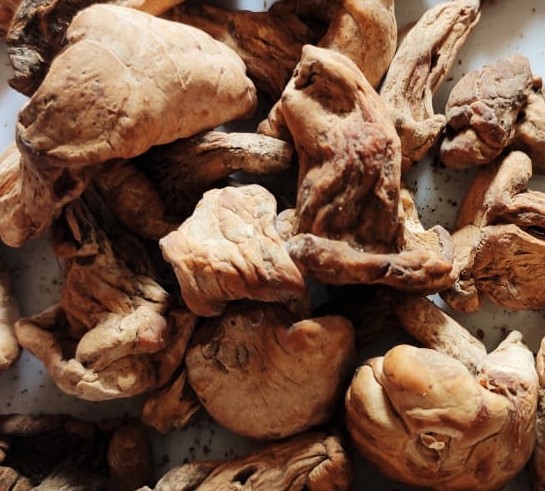
Sindh was the gateway to India for traders and conquerors, and in its long history has been under the rule of various empires and dynasties. Its cuisine, therefore, reveals the influences of Persian, Arabic, Turkish, Rajput, and Mughalai food. The use of dry fruits, rose petals and saffron in cooking are Persian effects on Sindhi food. Iranians introduced non-vegetarian food such as kababs and biryanis to Sindhis.
Religions like Hinduism, Buddhism, Jainism, Islam, and Sikhism flourished in this region and left a lasting impact on the way people prepared their food. Even today, the kanaw prasad (wheat flour roasted in ghee with sugar and cardamom) that Sindhis offer to god is a direct
influence of Sikhism, in which this prasad is distributed in gurudwaras (Sikh temples). The Sindhi Bhatias of Thatta region are strictly vegetarian and do not have even onion and garlic in their food. They follow the Bhakti sect of Hinduism and offer bhog (a complete meal ) to Shrinathji every day.
The geographical features of the terrain from the fertile plains of the River Sindhu flowing through Sindh to the dry hot Tharparkar Desert in the southeastern region of Sindh and the proximity to the Arabian Sea – all these have played an important role in shaping the cuisine of the region. The availability of vegetables in the fertile Sindhu valley plains gave rise to sai bhaji, a nutrient-rich dish made of greens like spinach, fenugreek, sorrel, and dill leaves, vegetables and lentils, and Sindhi curry, a gram flour based curry with vegetables like lady’s finger, cluster beans, potatoes, and yam.
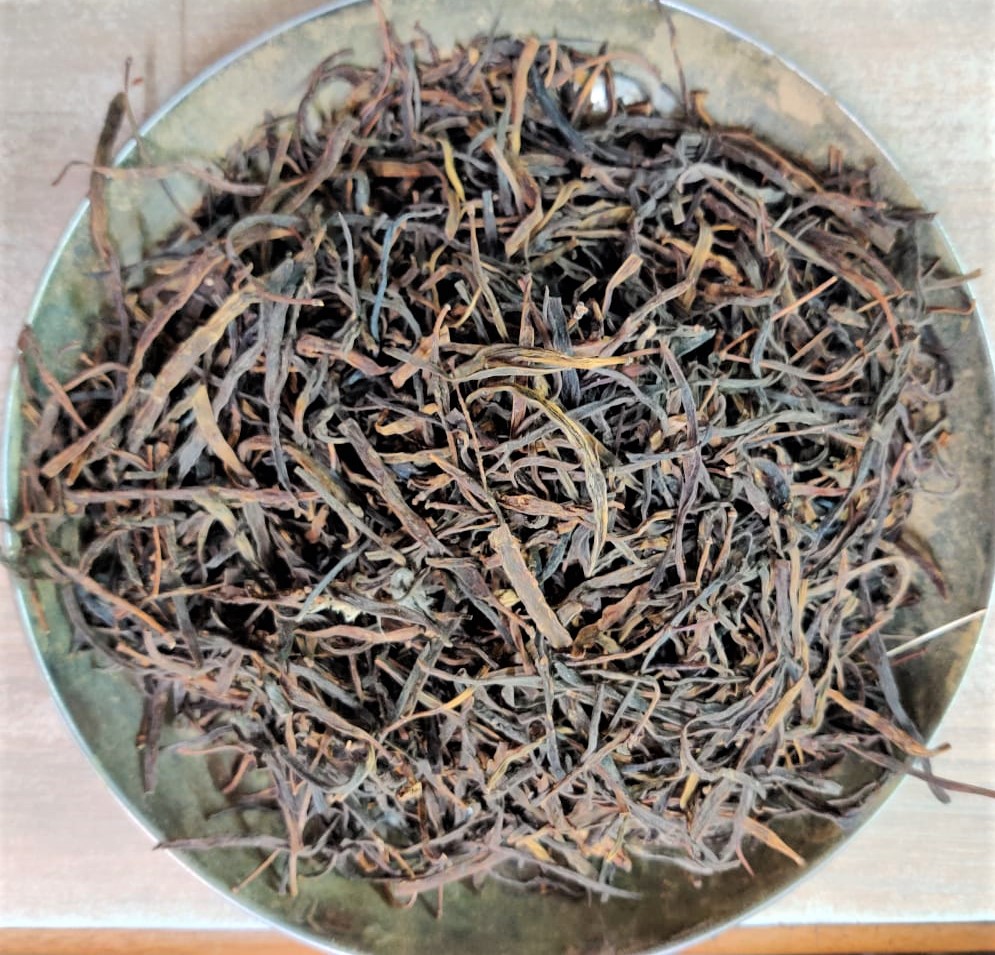
The desert dwellers of Tharparkar enjoy singhran ji bhaaji and singhran jo raabro, both made of sanghri that grows in the dry arid region.
Pic: SANGRI By Junisha Dama, Mumbai
Pallo fish, a gift of River Sindhu, is a much sought after food of the Sindhis. The fish swims upstream against the powerful river currents and has a strong affinity with Sindh. Fried and served with a sprinkling of dry masalas like coriander powder, red chilli powder, amchur powder, and pepper powder or cooked in an onion and garlic gravy called daag, it has a distinctive taste and aroma that Sindhis relish. The fried aani (roe) of the pallo fish can send a true-blooded non-vegetarian Sindhi into food heaven.
Sindhi teevan (mutton) is another much loved traditional dish cooked in onion and tomato-based gravy with spicy masalas. Historically, it was cooked in a kunoh ( a clay pot) which imparted an earthy flavour to the dish. Foods such kok pallo or kune jo bhee, which are pallo fish or bhee spiced and steamed till succulent in the clay pot either on a slow fire or buried in the hot sand were lip-smacking dishes much looked forward to by everyone.
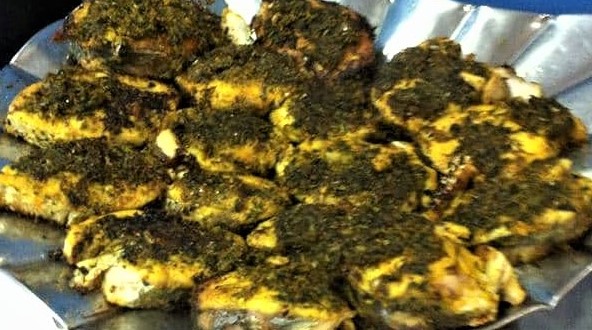
Papad , kheecha (rice papad), and kachriyoon ( fried rice fritters) are the favourite accompaniments to a Sindhi meal. Mangoes, lemons, onions, chillies, ginger, and carrots fermented in oil or water with spices and made into either sweet or savoury khataiyn (pickles), are much relished with koki (flatbreads with onions and coriander leaves) or lolo (a sweet flatbread).
The Sindhis make some very unique sweets such as singaran ji mithai(a sweet made of sev (unsalted gram flour strings))and khoya – solid condensed milk), pista badamin jo varo (a praline made of pistachios and almonds), pistan ji mithai ( a sweet made of pistachios and khoya), majun, khorak, or tosha ( sweet flour rolls).
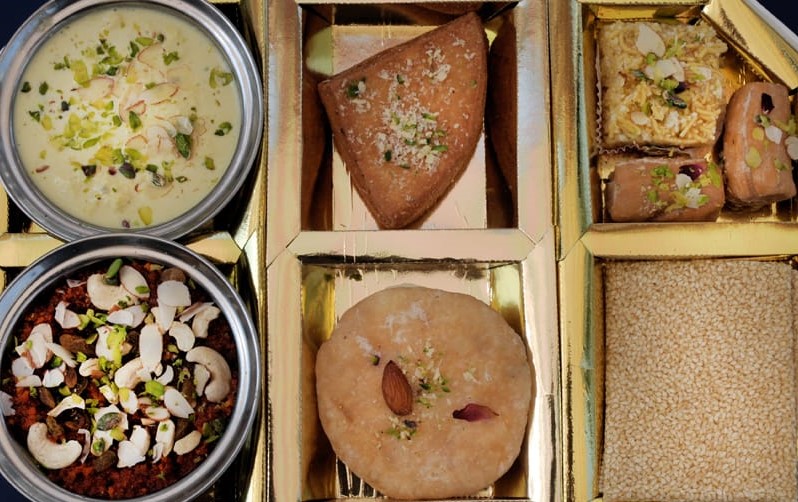
Dal pakwan, channa dabroti, bhee batatan ju chaapiyun, dal puri, sanna pakora, teevan dabroti, keema dabroti, keema samosa, and faloodo are some of the Sindhi street foods enjoyed even by non-Sindhis everywhere.
Featured Image : Dal Pakwan
Featured Image Credit: Dinesh Shukla at Ho Jamalo Restaurant, Ahmedabad
Jyoti Mulchandani
Ahmedabad

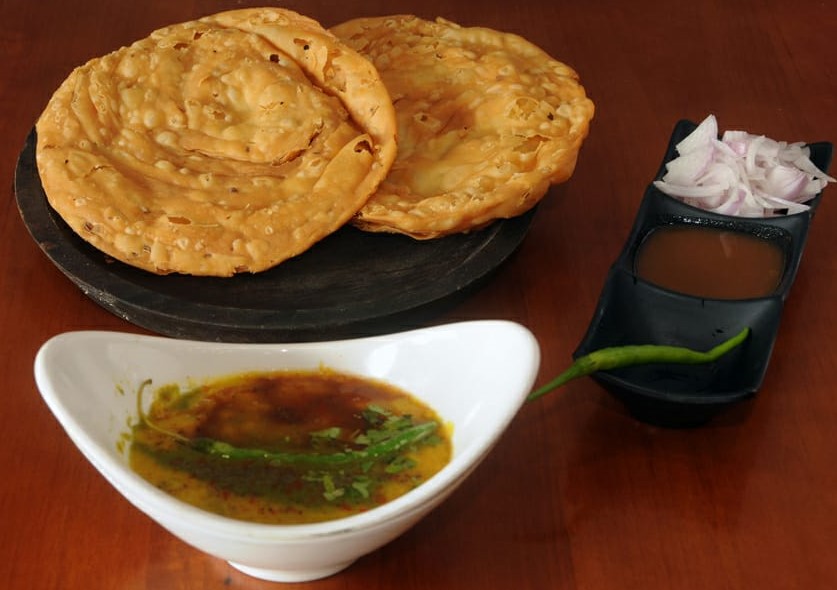
Give a Reply